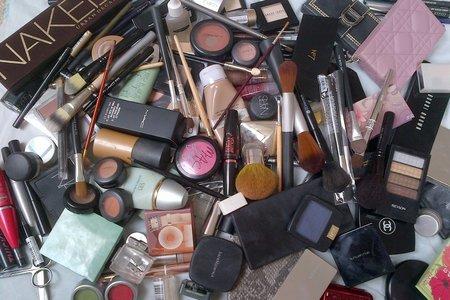Women: For Greater Productivity, Lean Away—From the Mirror
Published: Feb 18, 2014

“Complete a pre-MBA course at Oxford Business School, become proficient at a musical instrument or learn another language.”
According to Tracey Spicer during her recent TED talk, that’s what women could do with the 3,276 hours they currently spend grooming for work. Oh, and if they groom too much, they might need those extra hours for a second job: “If a woman doubles her grooming time, her earnings decrease on average 3.4 per cent,” Spicer says. “That’s because it’s a non-market activity, like time spent doing the housework (which we know women already do the bulk of).”
The Australian TV anchor—no stranger to an elaborate camera-ready beauty routine—notes that women spend, on average, triple the time that men do getting ready for work (which ends up equating to 10 whole work days over a year). Breaking down her own routine—daily runs, showers followed by lotion application (and waiting for it to soak in), then bronzer application (and waiting for it to soak in), hair, make up, and outfit coordination—Spicer admits that she clocks in at around 45 minutes of primping per day.
She’s not alone—not by far. Among the many other high-powered woman with an insanely oppressive beauty routine is Founder and Chairman of Martha Stewart Living Omnimedia Martha Stewart, who just a few weeks ago detailed her intimidating morning (and evening… and through-out the day) grooming rituals for the New York Times: “I get up a couple hours before I’m supposed to leave in the morning and I’ll put on a mask … Then I shower and I wash it all off. I slather myself with serums. First, it’s a toning lotion… I spray my whole face and body…Then I might use a vitamin B or SkinCeuticals C E Ferulic serum. I’ll also put on Clé de Peau or SkinCeuticals moisturizer…”
Gentle readers, we’re not even up to the serums, sunscreen, and makeup yet. And this was the abbreviated version (you can read her routine in full at the New York Times).
Though it sounds vain and excessive, intense grooming is a vicious cycle that’s easier to turn up than dial down. As Spicer notes, whenever she tries to opt out of her routine, people ask if she’s tired or ill. For a woman who’s trying to present the appearance of having it “together” (especially, say, one with kids who wants to look collected and well-rested), ditching undereye concealer might feel like too big a career risk.
But setting aside the expectations of those who know you (we’re not all public figures, after all), how much grooming is necessary to look professional to strangers? Say, for a job interview or presentation for a new client?
The New York Times suggests a “middle of the road” approach, at least to makeup: a 2011 Procter and Gamble study referenced in the article suggests that a moderate amount of cosmetics (foundation, defining eye shadow and liner, natural-but-better lip color) is best for making a “pulled together” and professional impression. But what about obsessive moisturizing, like Martha Stewart’s, or the constant maintenance of a splotch-free fake tan, like Spicer’s?
What Spicer gets at that the Times doesn’t touch is that women often toil longer and harder at looking “naturally” perfect than they would just slapping on a little eye makeup. The insidious nature of the time-consuming “grooming” beast is that it’s secret—women groom because they’re not as effortlessly perfect as they feel they have to be, and they continue to pick at all imperfections until 27 minutes of productivity has been lost to the mirror.
Thus, the real trick to opting out of a horrendous morning routine may be simply accepting reality.
Of course, that’s a tall order. Unlike men, many women feel an intense amount of pressure to appear like ageless nymphs, even just to go to work. Anything short of that—kinks in the hair, bags under eyes, dry skin—feels unprofessional. Because the unspoken rule is that, on top of actual work duties, the job of a woman is also to always look good.
To that, Spicer respectfully calls “bullshit.” Before a rapt audience during her TED Talk, she strips away the artifice: she removes her constricting dress, wipes away her makeup, and spritzes her blown-out hair with water. Regaining our sanity, she explains, is a three-part process:
1) Track your minutes of personal grooming over a day, week and month.
2) Make a list of other things you could be doing: stretching, reading, having breakfast with your family.
3) Decide which parts of your routine you can live without, and dump it.
"Imagine all the things we could achieve if we didn’t conform to society’s unreasonable expectations of how we should look; our increased levels of productivity, whether in the workplace or the home,” Spicer says. At this point during her talk, she’s standing in a tank top and shorts, with wet hair, carrying herself with total confidence, Spicer doesn’t look less professional for her lack of accoutrements (fluffed hair, sleek makeup, tight, colorful dress)—she looks more like a real person with something important to say. And somehow, that’s powerful. She gives herself the authority to speak with decisiveness. She doesn’t need the dress, or the hair, to feel worth listening to.
By ditching the artifice, imagine the increase, she says, in “our satisfaction at being who we really are, not some advertising ideal.”
3,276 hours aside, that could be the greatest gain of all.
Read More:
